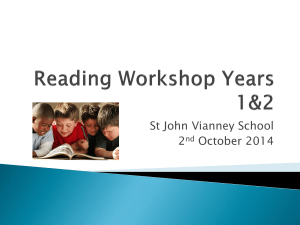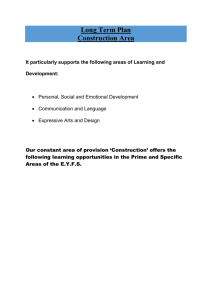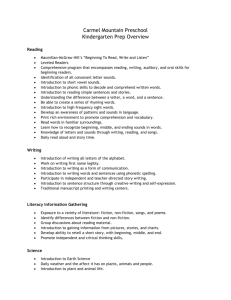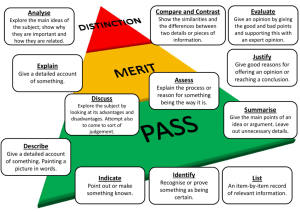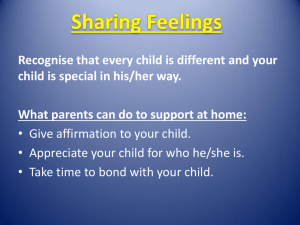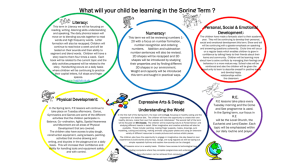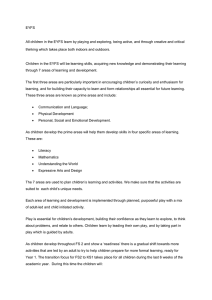The Early Years Foundation Stage has seven areas of learning that
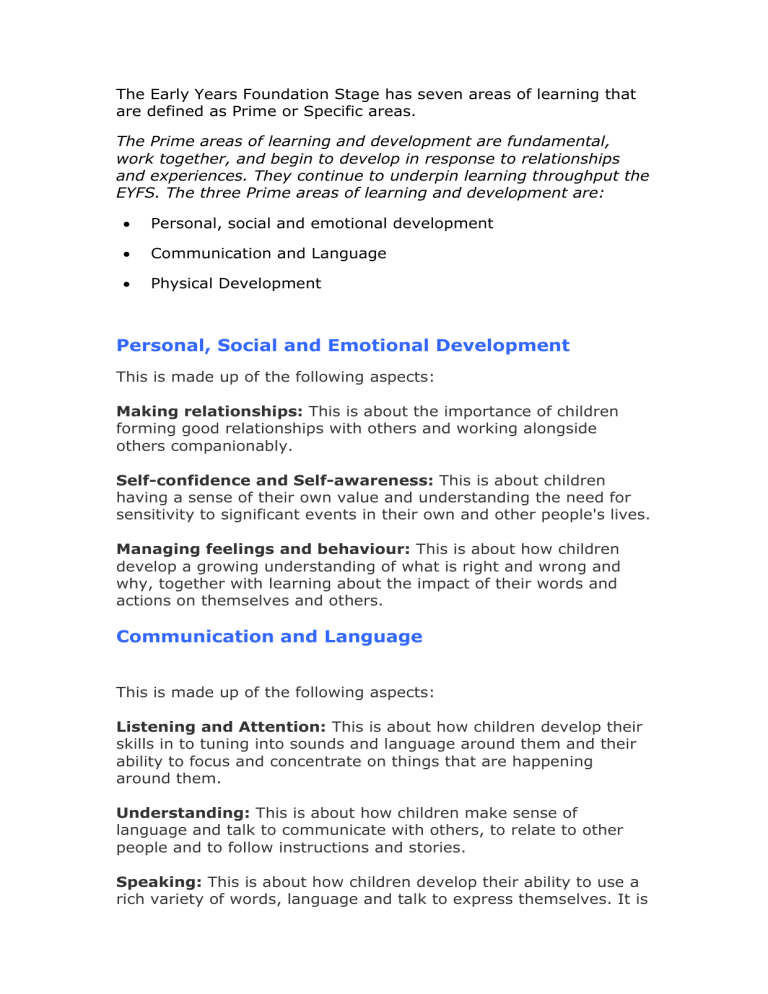
The Early Years Foundation Stage has seven areas of learning that are defined as Prime or Specific areas.
The Prime areas of learning and development are fundamental, work together, and begin to develop in response to relationships and experiences. They continue to underpin learning throughput the
EYFS. The three Prime areas of learning and development are:
Personal, social and emotional development
Communication and Language
Physical Development
Personal, Social and Emotional Development
This is made up of the following aspects:
Making relationships: This is about the importance of children forming good relationships with others and working alongside others companionably.
Self-confidence and Self-awareness: This is about children having a sense of their own value and understanding the need for sensitivity to significant events in their own and other people's lives.
Managing feelings and behaviour: This is about how children develop a growing understanding of what is right and wrong and why, together with learning about the impact of their words and actions on themselves and others.
Communication and Language
This is made up of the following aspects:
Listening and Attention: This is about how children develop their skills in to tuning into sounds and language around them and their ability to focus and concentrate on things that are happening around them.
Understanding: This is about how children make sense of language and talk to communicate with others, to relate to other people and to follow instructions and stories.
Speaking: This is about how children develop their ability to use a rich variety of words, language and talk to express themselves. It is
how they become able to make themselves understood by others and grow in confidence with these skills.
Physical Development
This is made up of the following aspects:
Moving and Handling: This is about how children develop their coordination, control and movement through opportunities to move and be active. It is about large scale gross motor movement and control such as mastering crawling, walking, climbing, hopping and the fine motor control developed through activities with the hands and fingers such as drawing, cutting, managing buttons.
Health and self-care: This is about how children develop control over their bodily functions and how they learn to take of themselves and their health through hand washing, healthy eating and exercise.
The Specific areas grow from the Prime areas to provide contexts for learning. Specific areas include essential skills and knowledge for children to engage with and participate in society.
Literacy
This is made up of the following aspects:
Reading: This is about how children start to recognise words, signs and symbols around them such as shop signs, road signs and their own name. This is about how children develop a love of books, both fiction and non fiction, an understanding of characters and the language of stories, how books can answer questions and, thorough the teaching of phonics, how the sounds that letters make can be put together to make words that can be read.
Writing: This is about how children start to experiment with making marks that mean something to them and that they can talk about. It is about children beginning to experiment with shapes that look like letters, moving to letters that are personal to them. It is about children ‘writing’ for real reasons in their play; a shopping list, a story, a card, an invitation, a sign. It is about children beginning to recognise letters and to match them to the sounds so that they can ‘sound out’ words that they want to write.
Mathematics
This is made up of the following aspects:
Numbers: This is about how children gradually know and use numbers and counting in play, and eventually recognise and use numbers reliably so that they can develop mathematical ideas and solve problems. It is about how children develop an awareness of the relationship between numbers and amounts, and know that numbers can be combined to be 'added together', can be separated by 'taking away' and that two or more amounts can be compared.
Shape, Space and Measure: This is about how through talking about shapes and quantities, and by developing appropriate vocabulary, children use their knowledge to develop ideas and to solve mathematical problems.
Understanding the World
This is made up of the following aspects:
People and Communities:
This is about how children begin to know about their own and other people’s cultures in order to understand and celebrate the similarities and differences between them in a diverse society.
The World: This is about the children becoming aware and interested in the natural world and find out about their local area, knowing what they like and dislike about it. It also provides children with many opportunities to explore and investigate objects, materials and their properties, learn about change over time and patterns, similarities and differences, and question why things happen and how things work.
ICT:
This is about how children find out about and learn how to use appropriate information technology such as computers and programmable toys that support their learning.
Expressive Arts and Design
Expressive Arts and Design is about children responding in a variety of ways to what they see, hear, smell, touch or feel and how, as a
result of these encounters, they express and communicate their own ideas, thoughts and feeling.
It is made up of the following aspects:
Media and Materials:
This is about the children’s independent and guided exploration of and engagement with a widening range of media and materials finding out about, thinking about and working with colour, texture, shape, space and form in two and three dimensions. This is also about children’s independent and guided exploration of sound, movement and music. Focusing on how sounds can be made and changed, how they can form a rhythm, matching movements to music and singing familiar songs. Also included in this area is the way that children learn about the construction process and the tools and techniques that can be used to assemble materials creatively and safely.
Being Imaginative: This is about how children are supported to develop their imagination through stories, role-play, imaginative play, music, design and art.
